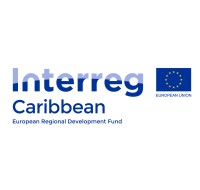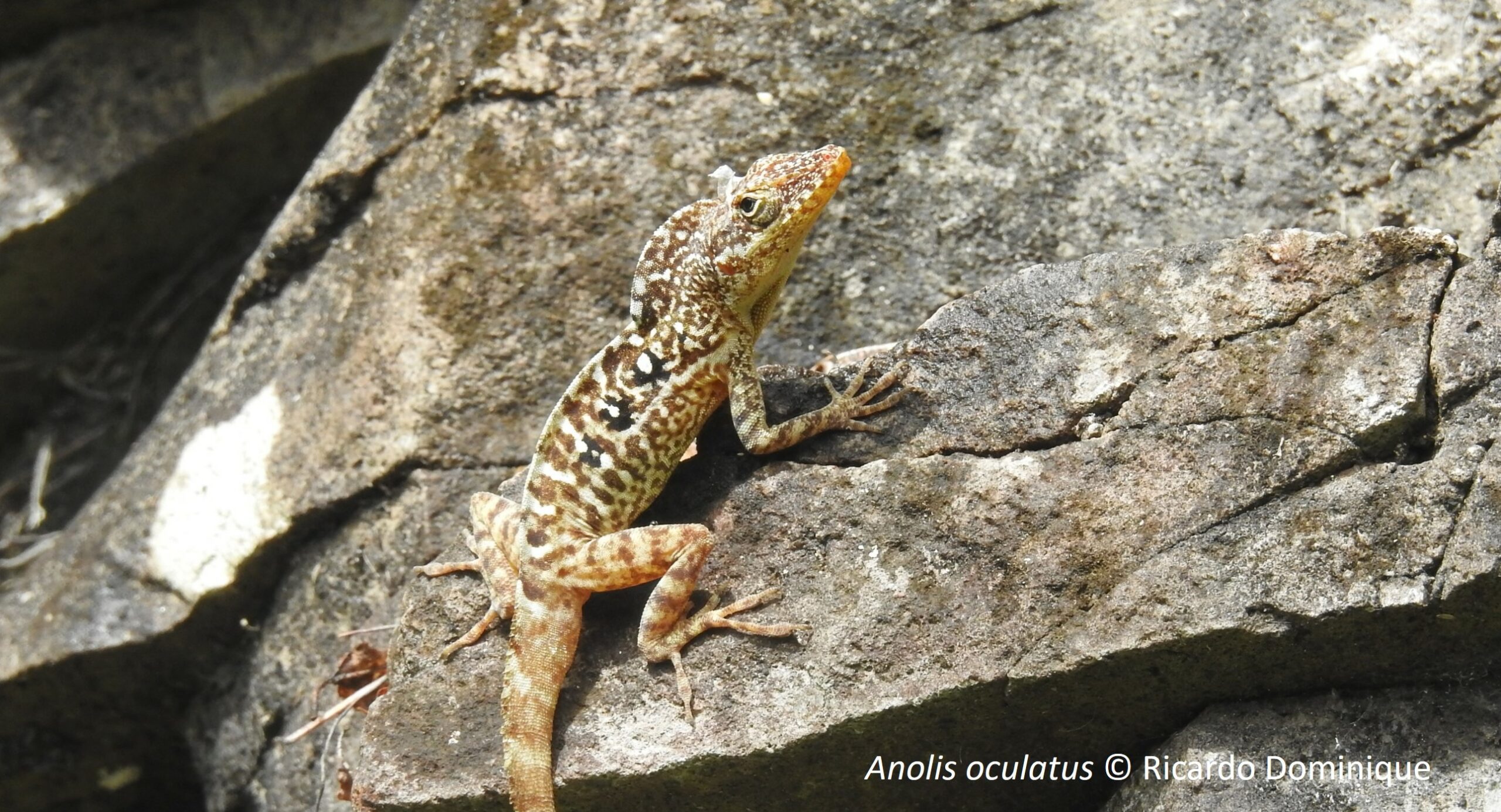A new mission has just ended in Dominica. Although conducted for scientific purposes, the mission was also a great human adventure in this island that is referred “The Nature Island of the Caribbean” in reference to its exceptional conservation. Here is the story of a week dedicated to anoles.
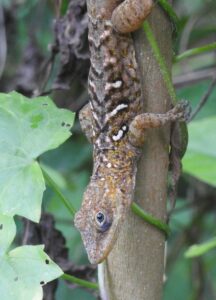
Anolis oculatus
The island of Dominica, like many islands in the Caribbean, has a unique biodiversity with several endemic species, i.e., species that are found nowhere else. This is the case of Anolis oculatus, an arboreal lizard measuring a few centimeters long and of variable appearance throughout the different ecosystems of the island. Although it is not considered as threatened, A. oculatus had to deal in the last few years with the competition from another species, A. cristatellus, an invasive lizard native to Puerto Rico. The consequences of this very recent interaction on the native species are not yet known. The study of these two species is therefore one of the research programs of the MERCI project, in particular to assess the risks posed by the invasive species on the native species.
On the island, several people working at the Forestry, Wildlife and Parks Division, the government partner of the project in Dominica, will monitor the two species. Before that, two missions were conducted, led by researchers from Caribaea Initiative, to start the first investigations and train the team in Dominica. The second, which has just ended, was led by Annabelle Vidal, a specialist in the study of anole lizard populations.
The mission began with a theoretical course followed by practical training conducted in a botanical garden where Annabelle demonstrated techniques for capturing lizards, handling and measuring them, and collecting samples. This was also the opportunity for the rest of the team to practice these techniques under her supervision. Norma, a young student who benefited from the training, was enthusiastic about this opportunity to learn capture-mark-recapture techniques: “I’m currently finishing up my own Masters project, so the skills and methods she taught us will be crucial for this and future anole projects that we will pursue.”
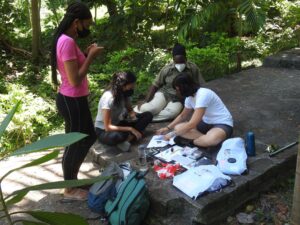
Demonstration of the techniques to study anoles
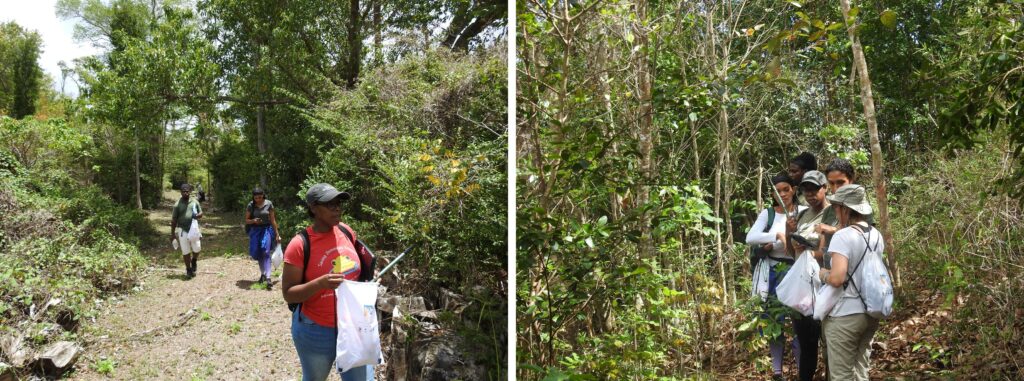
Survey of sites and delimitation of sampling transects
Over the next four days, the team travelled through the island, exploring and selecting sites spread across the whole territory. With their equipment loaded in bags, the scientists had to adapt to the field, which present varied landscapes. At the northern tip of the island, in the Park Connor site, the wind on the hills is so constant and strong that the trees grow askew. Further inland, Annabelle is marked by the height of the trees: “After Hurricane Maria hit in 2017, the island was devastated. But Titou George’s tropical rain forest is growing back so quickly that the trees are already several meters high”. During the mission, a hundred anoles were captured, studied (measurements, collection of tissue and faeces samples), and marked using colored implants placed under their skin, which will allow, during a future capture, to identify each individual (for more information, read the mission report).
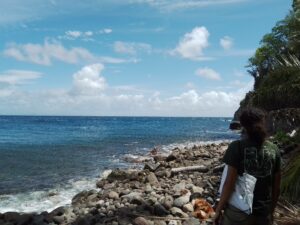
At one of the sampling sites, the transect marked out for monitoring ends a few meters from the beach
The mission also represents an opportunity for the various project partners to create links. They were enthusiastic about the good mood in which the work was done throughout the week. It was also a great opportunity to share each other work. In addition to the work on the anoles, Annabelle was able to accompany Jeanelle during the nocturnal monitoring of the iguanas. As part of the MERCI project, Jeanelle is studying the impact of the common iguana (Iguana iguana), an invasive species in Dominica and in many Caribbean islands, on the Lesser Antillean iguana (I. delicatissima), a native species. Eradication measures for the invasive species and hybrid individuals are carried out by the team to try to limit the negative effect on the local species. Annabelle was also able to approach, thanks to a collaborator of the MERCI project, the Imperial Amazon, an emblematic parrot of Dominica which appears in particular on its flag and its coat of arms.
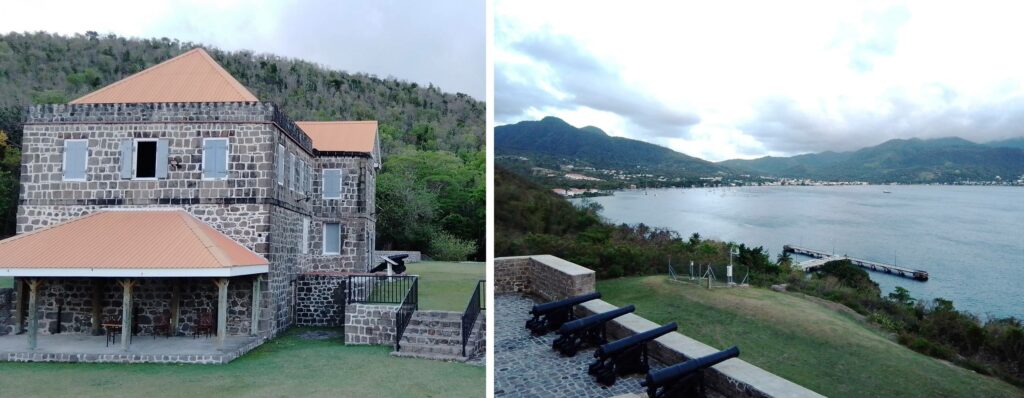
During the mission, a part of the team slept in an English fort in the north of the island, a UNESCO heritage site, between two field sessions.
Although the mission is completed, the work in Dominica continues for the partners on site. Captures of anoles will continue on the various sampling sites set up during the week, with a survey planned every two weeks. The data collected will be analyzed in October, at the end of the fieldwork, to better understand the consequences of the introduction of the invasive species on the native species, and possibly to implement adapted management measures.
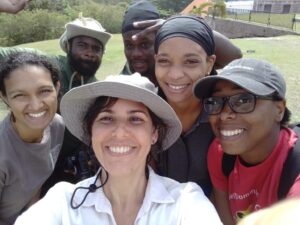
Annabelle Vidal (in the center), surrounded by the members of the team on site (from left to right): Jeanelle Brisbane, Ricardo Dominique, Benjamin Stewart, Ira Pierre and Norma Anthony.
Read the mission reports (PDF)
Photos: Ricardo Dominique & Annabelle Vidal
The MERCI project is co-financed by the INTERREG Caribbean program under the European Regional Development Fund
